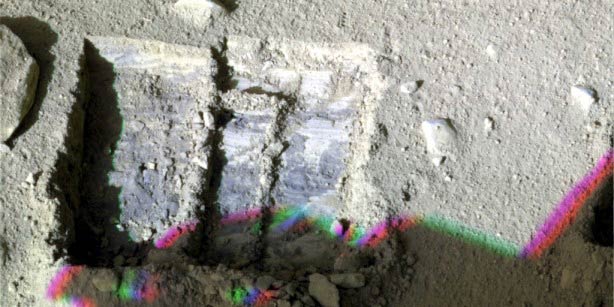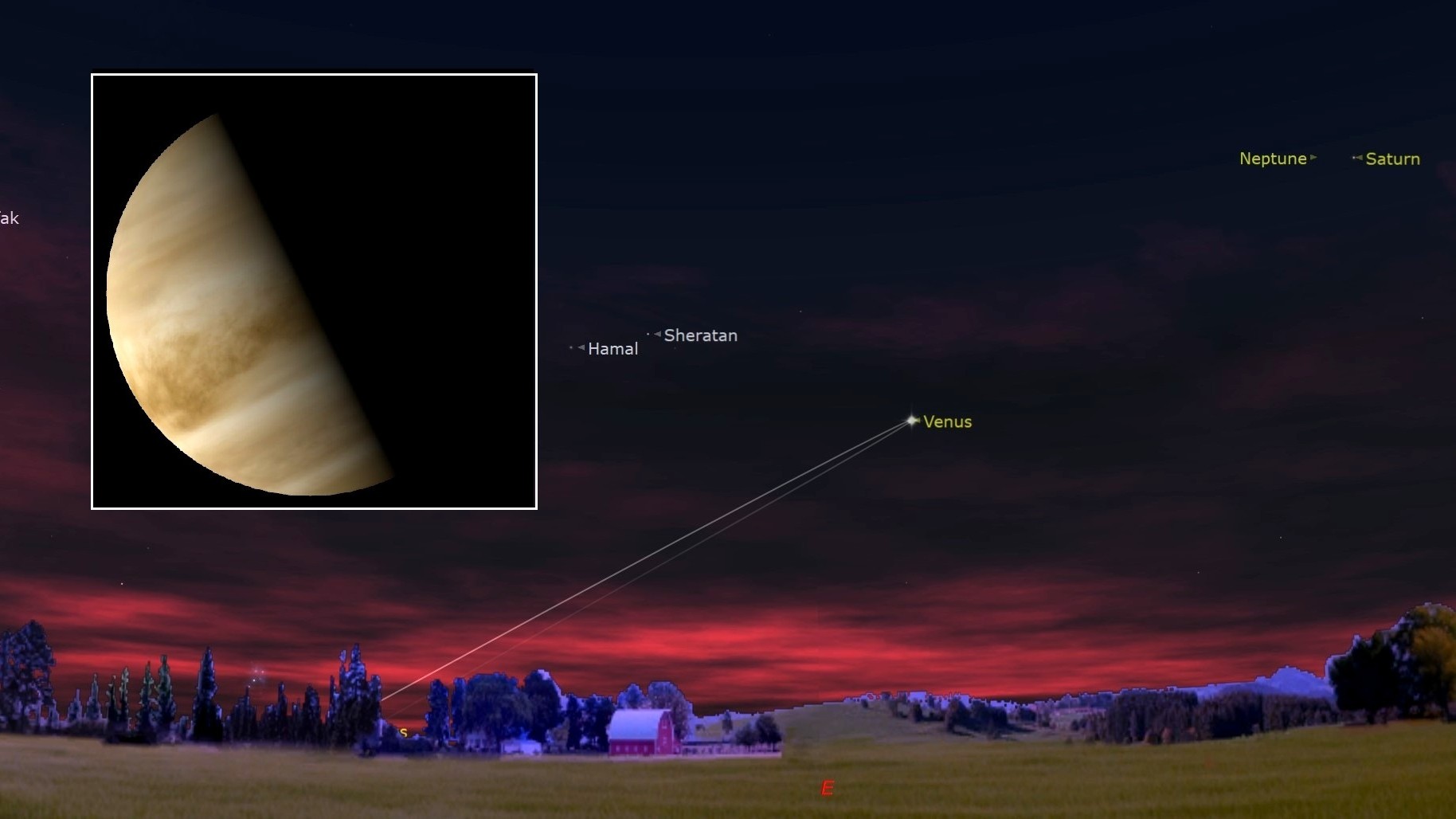Phoenix Lander Scoops Dirt from Under Martian Rock

As fall creeps up on the arctic plains of Mars, NASA's Phoenix Lander is using the few weeks it has left to gather as many samples of Martian dirt for analysis as it can.
Over the past two weeks, Phoenix's nearly 8-foot-long (2.4-meter) arm moved a rock named "Headless" about 16 inches (40 cm) and snapped an image of the rock with its camera.
Then the robotic arm scraped up some of the dirt underneath the rock and delivered a few teaspoonfuls of it onto the lander's optical and atomic-force microscopes. These microscopes are part of Phoenix's Microscopy, Electrochemistry and Conductivity Analyzer (MECA). (MECA also includes a wet chemistry lab that analyzes the composition of dirt samples.)
Phoenix landed on Mars on May 25 and is currently in its second mission extension slated to last through December, though the spacecraft will likely lose its energy supplies before then. The lander is scraping up samples of Martian dirt at its landing site in the red planet's arctic regions and analyzing them for signs of Mars' past potential habitability.
Scientists are conducting preliminary analysis of the dirt sample delivered to Phoenix's microscopes, which has been nicknamed "Captain Hessian."
The dirt under the rock piqued their interest because it may contain a high concentration of salts, said Phoenix mission scientist Diana Blaney of NASA's Jet Propulsion Laboratory in Pasadena, Calif.
As water evaporates in arctic and arid environments on Earth, it leaves behind salt which can be found under or around rocks, Blaney said. "That's why we wanted to look under Headless, to see if there's a higher concentration of salts there," she explained.
Get the Space.com Newsletter
Breaking space news, the latest updates on rocket launches, skywatching events and more!
Phoenix scientists also want to analyze the hard, icy layer beneath the Martian surface underneath the rock to compare it to other areas on the surface they have already excavated and to look for clues on the processes that affect the ice. The robotic arm has dug into a trench called "La Mancha" in part to see how deep the Martian ice table is.
The Phoenix team also plans to dig a trench laterally across some of the existing trenches to reveal a cross section, or profile, of the ground's icy layer.
"We hope to learn more about how the ice depth is controlled by physical processes," said Phoenix co-investigator Mike Mellon of the University of Colorado, Boulder. "By looking at how ice depth varies, we can pin down how it got there."
As the lander enters its fifth month on Mars, its weather instruments have detected water-ice haze clouds and snowfall in the northern Martian sky as temperatures get colder with the waning daylight.
As sunlight at Phoenix's latitude diminishes, its activities will be curtailed and it will eventually transition into a weather station. All activities will likely cease by the end of the year.
Join our Space Forums to keep talking space on the latest missions, night sky and more! And if you have a news tip, correction or comment, let us know at: community@space.com.

Andrea Thompson is an associate editor at Scientific American, where she covers sustainability, energy and the environment. Prior to that, she was a senior writer covering climate science at Climate Central and a reporter and editor at Live Science, where she primarily covered Earth science and the environment. She holds a graduate degree in science health and environmental reporting from New York University, as well as a bachelor of science and and masters of science in atmospheric chemistry from the Georgia Institute of Technology.
